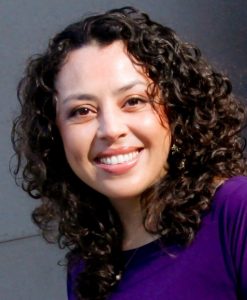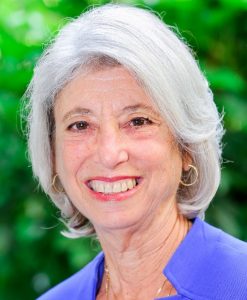
Black teachers: How to recruit them and make them stay

Lessons in higher education: What California can learn

Keeping California public university options open

Superintendents: Well-paid and walking away

The debt to degree connection

College in prison: How earning a degree can lead to a new life

Imagine a classroom with confident and curious learners speaking, reading and writing in two languages. Where children are learning complex science or social science concepts taught in one language, with intentional second language development building on that learning. Where English dominant students build proficiency in Mandarin while building their English skills, and Mandarin dominant students maintain their home language while building English proficiency. Imagine a classroom where students are on a path able to speak, read and write fluently in two or more languages, and are joyfully learning and thriving.

Vickie Ramos Harris
This is the type of education more and more families are demanding for their children. This growing interest is reflected in the overwhelming public support — 73.5 percent — at the ballot box last November for the passage of Proposition 58, the California state ballot initiative that creates more opportunities for bilingual education. But as public schools work to respond to those demands, they are quickly realizing they face a crippling bilingual teacher shortage.
A new report released this week by Californians Together confirms that many districts face a shortage of bilingual teachers, and we expect that the shortage will only become more severe. Eighty six percent of the 111 school districts surveyed for the study said they anticipate major shortages even as they look to adding new bilingual programs. Despite this, few districts have a formal plan to deal with these shortages, which could leave many students without access to the significant benefits of bilingualism.

Shelly Spiegel-Coleman
As more families choose language programs that lead to biliteracy for their children, the state can address this shortage by initially targeting teachers who are bilingual but are teaching in English-only classrooms with the professional development that would prepare them to teach in bilingual settings. Our survey shows that there is a pool of nearly 7,000 teachers in California who are bilingual and are well positioned and motivated to reduce this shortage, if supported with professional development.
However, this is just the beginning. Our state policymakers, institutions of higher education, and our public schools must work together to develop the infrastructure to build a bilingual teacher pipeline that meets the growing demand of families for bilingual education and prepares our students for an increasingly global society.
Gov. Jerry Brown and the Legislature have taken a good first step by providing $5 million in this year’s budget to fund bilingual teacher professional development institutes (AB 952 – Reyes), to help teachers who have bilingual teaching credentials — but are no longer teaching in bilingual settings — transition back to bilingual classrooms.
In addition, local school districts should:
The state should:
Now is the time to ensure teachers have the professional development they need based on current research, pedagogy and best practices, along with opportunities to strengthen their second language, as well as additional compensation. It is equally imperative that the state begin to lay the foundation for a bilingual teacher pipeline for California’s long-term needs, and support all teachers with the skills and expertise on language development and supporting biliteracy.
As California takes these steps to address the bilingual teacher shortage, the state will serve as an important model of an education system designed to build on our country’s racial, cultural and linguistic strengths in a way that is aligned with science, and is simply good for all children in our state and our nation.
•••
Vickie Ramos Harris is a Fellow with the English Learner Leadership & Legacy Initiative, a Californians Together project in collaboration with the California Association of Bilingual Education.
Shelly Spiegel-Coleman is the Executive Director of Californians Together, a coalition of 23 statewide professional, parent and civil rights organizations focused on improving schooling for English learners.
The opinions expressed in this commentary represent those of the author. EdSource welcomes commentaries representing diverse points of view. If you would like to submit a commentary, please review our guidelines and contact us.

Legislation that would remove one of the last tests teachers are required to take to earn a credential in California passed the Senate Education Committee.

Part-time instructors, many who work for decades off the tenure track and at a lower pay rate, have been called “apprentices to nowhere.”

A bill to mandate use of the method will not advance in the Legislature this year in the face of teachers union opposition.

Nearly a third of the 930 districts statewide that reported data had a higher rate of chronic absenteeism in 2022-23 than the year before.
Comments (3)
Comments Policy
We welcome your comments. All comments are moderated for civility, relevance and other considerations. Click here for EdSource's Comments Policy.
Martin 7 years ago7 years ago
Since California voters were mislead into voting for prop 58, it should be challenged in court. Take the time to read the whole voter guide! The summaries are often misleading and that is what these unscrupulous activists are counting on: a misinformed populous!
Replies
Santiago Gonzalez 7 years ago7 years ago
In what ways were voters misled about Prop. 58, Martin?
Elizabeth Jimenez Salinas 7 years ago7 years ago
The US has a lot of catching up to do with the rest of the world where people speak multiple languages. Starting in preschool is the best time for our children to begin. Is there a training program for preschool teachers who will teach in a bilingual setting?